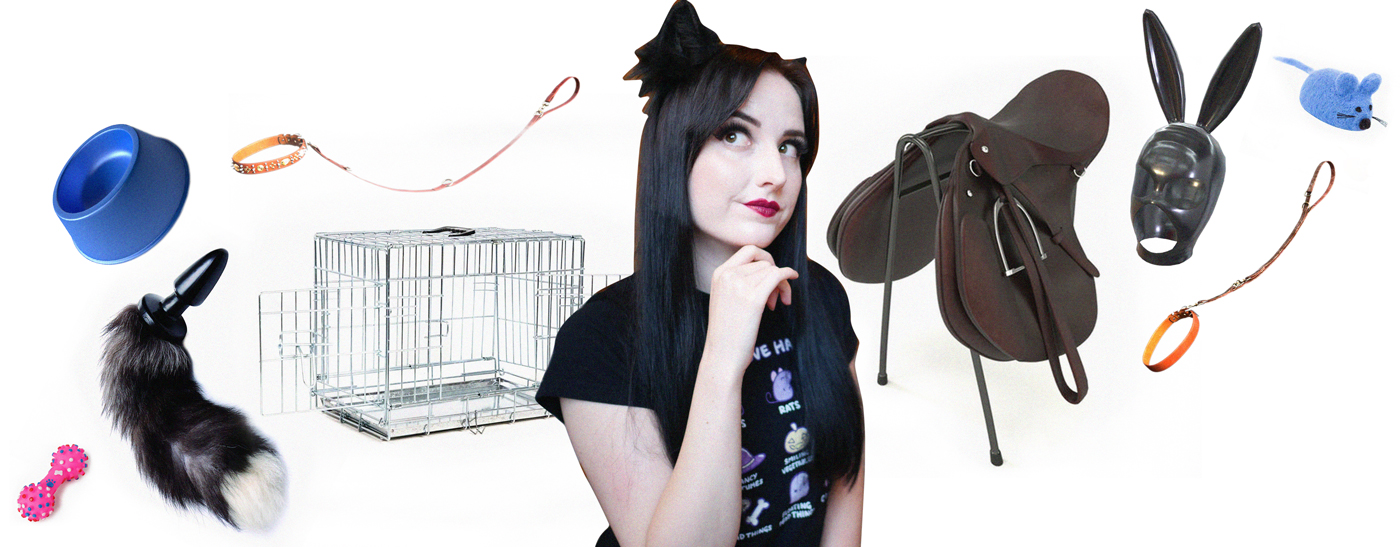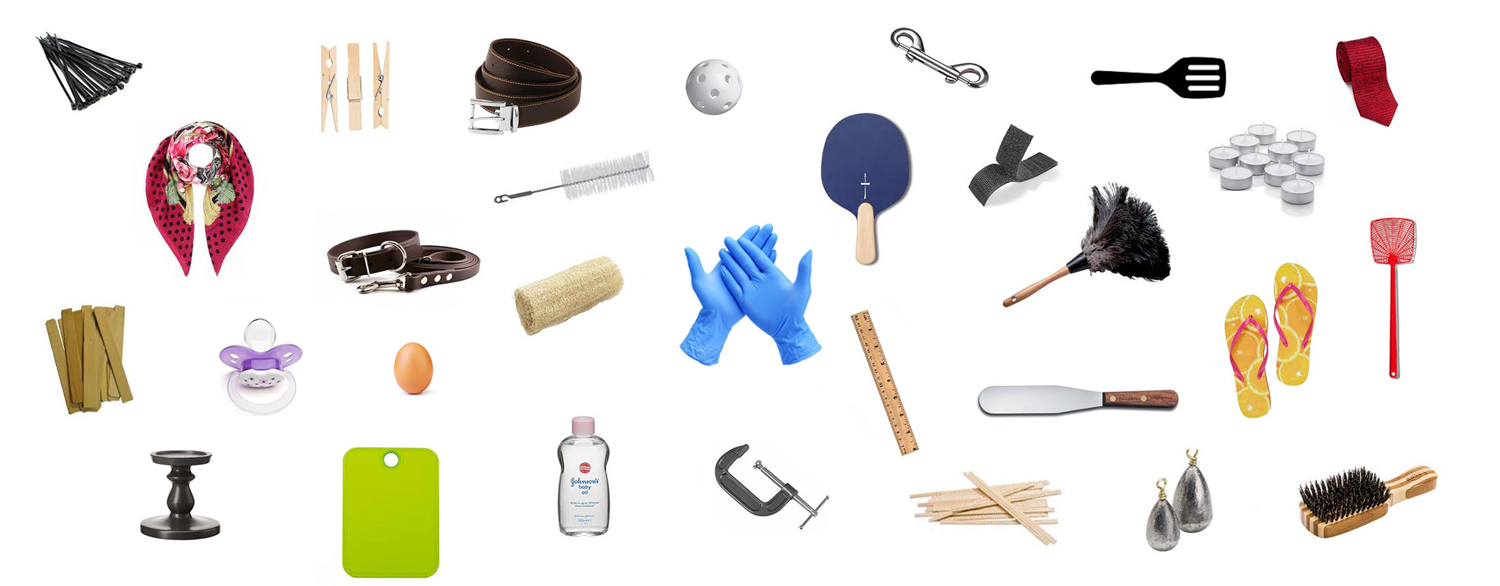Bimbos, Himbos, Stepford Wives, and Dolls
Despite centralizing efforts like Pink’s, the nascent bimbofication fetish space has always been fairly fragmented—to the point that many people used radically different terms for it, Sortimid recalls, like bimboization, bimbotization, and bimboification, before selling on bimbofication. (“Finding content was harder” before that terminological convergence, they recall.) So it should come as no surprise that “bimbofication means different things to different people, like most fetishes,” as Mr. Phoenyxx puts it. Or that “there are certainly all kinds of bimbos now.”
Most subdivisions in the bimbofication kink space align with varied ideas about the specific characteristics that define a bimbo.
Pink argues that many facets of the bimbo, like the focus on makeup as a tool for the hyperreal accentuation of key physical traits, are ancient and near-universal. But he and most others also acknowledge that “the bimbo as we knew it today was mostly formed by Western beauty standards,” as he puts it, especially those rooted in mid-to-late-20th century American feminine ideals: Hourglass silhouettes. Bleach blonde hair. Pink apparel. Although this archetype has spread across the world, and spawned regional offshoots, arguably including Japan’s Gyaru subculture, it originated in, and was always most accessible, to white, cis women with conventionally attractive body types—especially straight women with disposable income. This is still the image of bimbo-hood that most people involved in bimbofication pursue. And it’s probably no coincidence that, as Pink notes, the bimbofication fetish world is overwhelmingly white.
But many people are drawn to what they see as the essence of the concept of the bimbo—the general accentuation of feminine traits, pursuit of empty-headedness, and sexual straight-forwardness. These folks have formed sub-kinks around distinct visions of how to manifest those values, according to their own cultural norms and beauty standards. So even within the tiny world of bimbo kink, it’s possible to find communities celebrating efforts to become fit, goth, or princess bimbos—and more. While some communities believe only women can become bimbos, others embrace the idea of men or non-binary folk becoming himbos, nimbos, or thembos. (Unsurprisingly, women can also be bimbo trainers.) Mr. Phoenyxx adds that there’s also variation in what sort of behaviors people focus on, and how they do so. Some bimbofication fetishists zero in on the quest to become ditzy above all else, for example, while others see bimbofication as a purely visual transformation, not a mental shift. Some only embody bimbo-ness during play, or for short periods, while others engage in transformation work and live as bimbos full-time. “If you asked 100 people how a bimbo acts,” Mr. Phoenyxx stresses, “you’d probably get a hundred answers.”
There are also subcultures built around the blending of already hyper-niche bimbofication with other hyper-niche fetishes. Notably:
- Bimbofication can merge into dollification, or “doll fetish,” a kink all about the quest to become a human doll—whether a lifeless one, or one shaped, animated, and manipulated by a doll maker. Doll fetish may involve role-play as a tin soldier, a robot, or a rag doll, but when mixed with bimbofication it often involves transformation towards the specific unreal beauty standards manifested in toys like a Barbie, or in outright sex dolls.
- Bimbofication can intersect with fetishes around mid-20th century domestic dynamics in the form of Stepfordization—transformation into an uncanny, subservient Stepford Wife.
- Bimbofication that intersects with gender play can take the form of men, to take one example, transforming willingly, or at a dominant partner’s behest, into a female bimbo.
The list goes on and on.
Battling Mainstream ‘Bimboism’
It’s hard to say if or how the vibrant world of bimbofication fetishes influenced the recent rise of mainstream, PG bimbofication trend—in part because folks in space like BimboTok don’t seem all that eager to discuss the fetish side of things. Zipper reached out to a dozen mainstream bimbofication influencers for this story. Only one replied, and only to pointedly state that her bimbofication content is not fetish-related, and that Zipper should never contact her again.
Some of the earliest modern cultural conversations about bimbofication were sparked by fetish content on social media, albeit this discourse was limited. And a few fetish figures, like the bimbofication content creator Alicia Amira, have clawed their way into conversations about the general mainstreaming of bimbo vibes and values. So it’s possible that bimbofication-the-fetish influenced bimbofication-the-mainstream-social-trend. But Sortimid points out that, in practice, BimboTok and similar mainstream communities “feel like their own separate thing.”
The rapid rise of the parallel world mainstream bimbofication irks fetishists like Pink. He goes so far as to label mainstream bimbofication advocates cultural appropriators, who’ve “invaded, twisted, and redefined” something from fetish world to their own ends without acknowledgment or input. “This is one of the reasons that I see it as my duty to gatekeep bimbofication,” he says.
Others like Roberts simply worry about the risk of confused mainstreamers stumbling into fetish spaces unawares. (One of Roberts’ friends thinks mainstream bimbofication should be called bimboism, to better differentiate these worlds.) About how the narrowness of the mainstream vision of what it means to be a bimbo denies some fetishists their hard-won bimbo-hood. (“I know bimbos who have right-wing views,” she says. “While I don’t agree with them, I wouldn’t say they’re not bimbos because of it,” despite mainstream bimbofication’s explicitly progressive political positioning.) And about the risk of popularization leading, in the inevitable capitalist progress, to a commodification of bimbo-dom that flattens out the idea—and its appeal.
“Obviously, this isn’t to say we should gatekeep,” she says. “I’m in favor of bimbofication being open to all those who are genuinely interested in it, whether that be for the kink aspects or not. But the best way to keep the community alive is probably to keep it just weird enough.”
But no matter their trepidations about or consternation with mainstream bimbofication, everyone Zipper spoke to within the fetish world suspects that a growing awareness of bimbofication writ large will draw ever more people towards the fetish. And that it’ll make it easier for people to explore longstanding interests in becoming bimbos, with less fear of social backlash for adopting what is an increasingly acceptable look and persona. “It can only be a good thing when we bring any fetish into the mainstream,” Mr. Phoenyxx argues. “It benefits us when these sorts of things are out in the open, and we can talk about them… That only helps us accept each other.”







